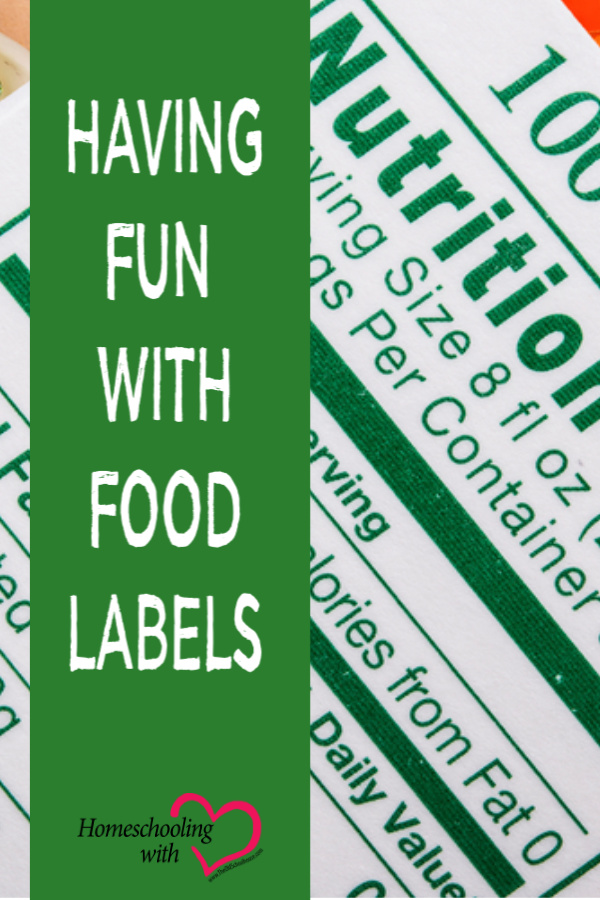Having Fun With Food Labels


Since March is National Nutrition Month, it is the perfect time to incorporate a lesson or two on nutrition. No matter what ages your children are, there are ways to teach them about the foods and drinks they consume each day and why they matter. One fun way to do this is to make a simple game of reading nutrition labels and lists of ingredients.
Before trying this, make sure your children understand the basic concept that the fuel and nutrients our bodies use each day are provided by the food we eat and the beverages we drink. Prepared foods and drinks have ingredients. These ingredients can contain things our bodies need like protein, fiber, fat, and nutrients. Food labels list ingredients and nutrients. Feel free to give more specific information about each of these as it seems appropriate for the age level of your children. For instance, you may want to discuss how our bodies use protein or why certain vitamins are important.
We began playing this game with food labels when my kids were quite young. At first, we would just guess numbers. How many calories do you think are in one serving of these crackers? One child would guess an amount. I would say “higher” or “lower,” and then the guessing would continue until the correct amount was guessed. Then we would move on to another item on the nutrition label. We would take turns between being the guesser and the person holding the item. This gives everyone a chance to also work on their reading and number skills. I was pleased to learn that the more we played this game, the more accurately my children were able to predict the amounts. We spent time discussing the types of ingredients and the nutrients they typically contain. For instance, some drinks had vitamin C. We would talk about the types of fruits that contain vitamin C and then look at the ingredients list to see if those fruits were present. Then, when they saw those fruits listed on another item, they would be able to predict that there would probably be vitamin C present. We also discussed protein, fat, and fiber, but guessing the amount of fiber can be particularly tricky.

In addition to nutrition labels, we also guessed ingredients. Just reading the list of ingredients can be challenging on some items. This can provide an interesting opportunity for research for your older children. Have them research each unrecognized ingredient and find out why it is used. Is it a preservative? Is it a thickening agent? Is it added for color? Is it an inexpensive substitute for another ingredient?
You can expand on this basic game idea as much as you want. Everyone could have an item, and you could guess whose item has the most fat or the least amount of calcium. This game is also great to play when you’re out at a restaurant and there are bottles of condiments on the table; it helps to pass the time while you wait for your food. In the end, hopefully your children will learn that ingredients and nutrition matter. Not all foods and drinks are created equal, but nutrition labels and ingredient lists will help them determine the best choices for their health. Happy National Nutrition Month!
Heidi Kinney is a freelance writer and editor. Her background includes professional teaching in the area of mathematics, as well as writing and editing for several educational publishers. She has been homeschooling her children since 2007. She shares homeschool resources and lessons on her website, SharedLessons.org.































